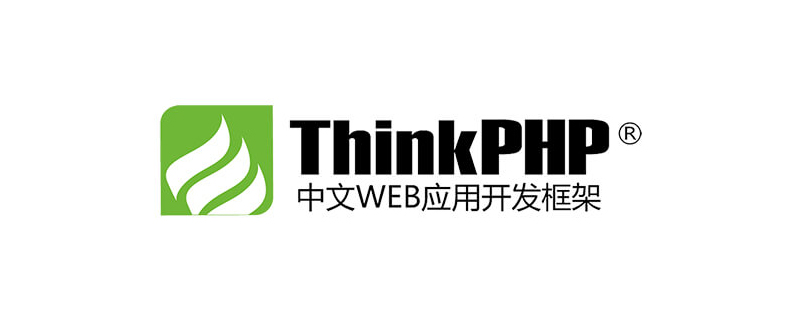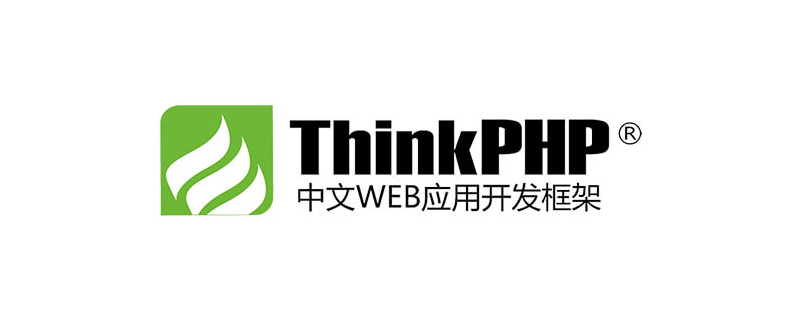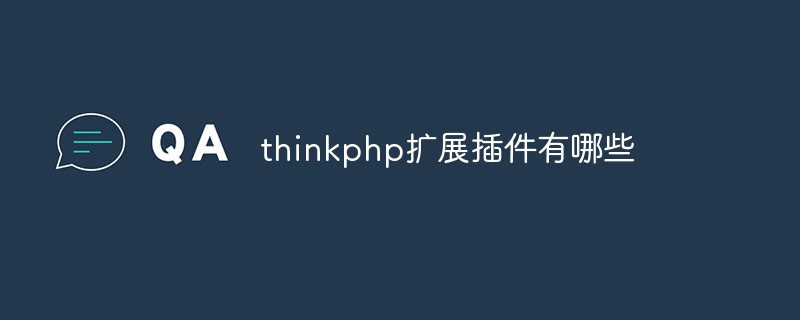With the continuous development of Internet technology, more and more websites are beginning to provide RSS subscription services so that readers can obtain their content more conveniently. In this article, we will learn how to use the ThinkPHP6 framework to implement a simple RSS subscription function.
1. What is RSS?
RSS (Really Simple Syndication) is an XML format used for publishing and subscribing to web content. Using RSS, users can browse updated information from multiple websites in one place without opening the web pages of each site.
2. How to use the ThinkPHP6 framework to implement RSS subscription?
- Create an RSSController controller
First, create an RSSController controller in the ThinkPHP6 framework. You can use command line tools to quickly create:
php think make:controller RSS
- Create an RSS subscription route
By default, ThinkPHP6 will map the URL path to the corresponding controller method. Therefore, we need to add an RSS subscription route in the routes.php file:
use think
acadeRoute;
Route::get('/rss', 'rss/index');Here we define a GET request, the routing path is /rss, and the corresponding controller method is rss/index.
- Create an RSS subscription template
Next, create an rss/index.html template file in the app/view/ directory. This template file will display the content of the RSS feed.
In the template file, we need to follow the RSS standard format to define data. For specific details, please refer to the RSS specification document. The following is a simple example:
<?xml version="1.0" encoding="UTF-8" ?>
<rss version="2.0">
<channel>
<title>示例RSS订阅</title>
<link>https://example.com/</link>
<description>这是一个示例RSS订阅</description>
<language>zh-cn</language>
<pubDate><?php echo gmdate('D, d M Y H:i:s T'); ?></pubDate>
<?php foreach ($articles as $article): ?>
<item>
<title><?php echo $article['title']; ?></title>
<link><?php echo $article['link']; ?></link>
<description><?php echo $article['description']; ?></description>
<pubDate><?php echo gmdate('D, d M Y H:i:s T', strtotime($article['pub_date'])); ?></pubDate>
</item>
<?php endforeach; ?>
</channel>
</rss>Among them, $articles is a list of article information we obtain from the database or other data sources.
- Generate RSS subscription data in the controller
Finally, implement the rss/index method in the RSSController controller, generate RSS subscription data and render the template file:
<?php
namespace appcontroller;
use thinkRequest;
use thinkResponse;
class RSS
{
public function index(Request $request)
{
// 从数据库中获取文章信息列表
$articles = Db::table('articles')->order('create_time', 'DESC')->limit(20)->select();
// 将文章信息转换为RSS标准格式
$data = [
'articles' => array_map(function ($article) {
return [
'title' => $article['title'],
'link' => 'https://example.com/article/' . $article['id'],
'description' => $article['summary'],
'pub_date' => $article['create_time'],
];
}, $articles),
];
// 渲染RSS订阅模板
$xml = view('rss/index', $data);
return Response::create($xml, 'xml')->header('Content-Type','application/xml');
}
}In this processing method, we first get the latest 20 articles from the database, and then convert them into RSS standard format. Finally, we use the thinkView class to render the rss/index.html template file and return it as an XML response.
3. How to test?
After completing the above steps, we can enter the routing path we set in the browser: https://example.com/rss to test the RSS subscription. At this point, you should see the RSS content in XML format, including information such as article title, link, summary, and publication time.
4. Summary
In this article, we learned how to use the ThinkPHP6 framework to implement a simple RSS subscription function. We created an RSSController controller and added a route that maps URL paths to controller methods. In the controller method, we generated the RSS feed data and used a template file to render it. Finally, we tested this feature in the browser.
The above is the detailed content of How to implement RSS subscription using ThinkPHP6. For more information, please follow other related articles on the PHP Chinese website!
 thinkphp是不是国产框架Sep 26, 2022 pm 05:11 PM
thinkphp是不是国产框架Sep 26, 2022 pm 05:11 PMthinkphp是国产框架。ThinkPHP是一个快速、兼容而且简单的轻量级国产PHP开发框架,是为了简化企业级应用开发和敏捷WEB应用开发而诞生的。ThinkPHP从诞生以来一直秉承简洁实用的设计原则,在保持出色的性能和至简的代码的同时,也注重易用性。
 一起聊聊thinkphp6使用think-queue实现普通队列和延迟队列Apr 20, 2022 pm 01:07 PM
一起聊聊thinkphp6使用think-queue实现普通队列和延迟队列Apr 20, 2022 pm 01:07 PM本篇文章给大家带来了关于thinkphp的相关知识,其中主要介绍了关于使用think-queue来实现普通队列和延迟队列的相关内容,think-queue是thinkphp官方提供的一个消息队列服务,下面一起来看一下,希望对大家有帮助。
 thinkphp的mvc分别指什么Jun 21, 2022 am 11:11 AM
thinkphp的mvc分别指什么Jun 21, 2022 am 11:11 AMthinkphp基于的mvc分别是指:1、m是model的缩写,表示模型,用于数据处理;2、v是view的缩写,表示视图,由View类和模板文件组成;3、c是controller的缩写,表示控制器,用于逻辑处理。mvc设计模式是一种编程思想,是一种将应用程序的逻辑层和表现层进行分离的方法。
 实例详解thinkphp6使用jwt认证Jun 24, 2022 pm 12:57 PM
实例详解thinkphp6使用jwt认证Jun 24, 2022 pm 12:57 PM本篇文章给大家带来了关于thinkphp的相关知识,其中主要介绍了使用jwt认证的问题,下面一起来看一下,希望对大家有帮助。
 thinkphp扩展插件有哪些Jun 13, 2022 pm 05:45 PM
thinkphp扩展插件有哪些Jun 13, 2022 pm 05:45 PMthinkphp扩展有:1、think-migration,是一种数据库迁移工具;2、think-orm,是一种ORM类库扩展;3、think-oracle,是一种Oracle驱动扩展;4、think-mongo,一种MongoDb扩展;5、think-soar,一种SQL语句优化扩展;6、porter,一种数据库管理工具;7、tp-jwt-auth,一个jwt身份验证扩展包。
 一文教你ThinkPHP使用think-queue实现redis消息队列Jun 28, 2022 pm 03:33 PM
一文教你ThinkPHP使用think-queue实现redis消息队列Jun 28, 2022 pm 03:33 PM本篇文章给大家带来了关于ThinkPHP的相关知识,其中主要整理了使用think-queue实现redis消息队列的相关问题,下面一起来看一下,希望对大家有帮助。
 thinkphp 怎么查询库是否存在Dec 05, 2022 am 09:40 AM
thinkphp 怎么查询库是否存在Dec 05, 2022 am 09:40 AMthinkphp查询库是否存在的方法:1、打开相应的tp文件;2、通过“ $isTable=db()->query('SHOW TABLES LIKE '."'".$data['table_name']."'");if($isTable){...}else{...}”方式验证表是否存在即可。
 thinkphp3.2怎么关闭调试模式Apr 25, 2022 am 10:13 AM
thinkphp3.2怎么关闭调试模式Apr 25, 2022 am 10:13 AM在thinkphp3.2中,可以利用define关闭调试模式,该标签用于变量和常量的定义,将入口文件中定义调试模式设为FALSE即可,语法为“define('APP_DEBUG', false);”;开启调试模式将参数值设置为true即可。


Hot AI Tools

Undresser.AI Undress
AI-powered app for creating realistic nude photos

AI Clothes Remover
Online AI tool for removing clothes from photos.

Undress AI Tool
Undress images for free

Clothoff.io
AI clothes remover

AI Hentai Generator
Generate AI Hentai for free.

Hot Article

Hot Tools

EditPlus Chinese cracked version
Small size, syntax highlighting, does not support code prompt function

SecLists
SecLists is the ultimate security tester's companion. It is a collection of various types of lists that are frequently used during security assessments, all in one place. SecLists helps make security testing more efficient and productive by conveniently providing all the lists a security tester might need. List types include usernames, passwords, URLs, fuzzing payloads, sensitive data patterns, web shells, and more. The tester can simply pull this repository onto a new test machine and he will have access to every type of list he needs.

Zend Studio 13.0.1
Powerful PHP integrated development environment

Atom editor mac version download
The most popular open source editor

SublimeText3 Chinese version
Chinese version, very easy to use





